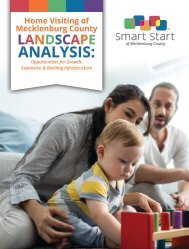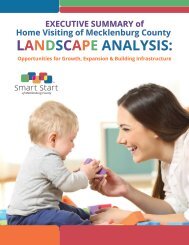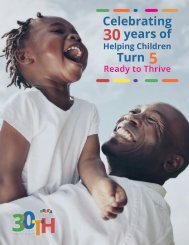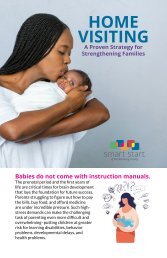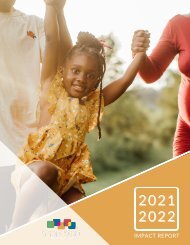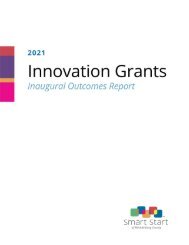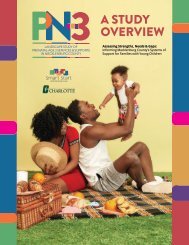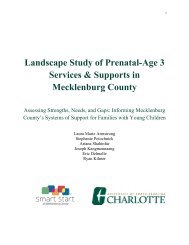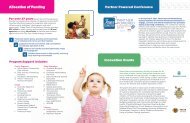Autism Family Resource Guidebook
Guiding Parents to Services (GPS), is pleased to share the new Autism Family Resource Guide. GPS is a funded program of Smart Start of Mecklenburg County. This publication serves as a guide for parents with children ages birth to five as they navigate the world of autism. For more information regarding the publication or the program, please reach out to the Autism Coordinator of Guiding Parents to Services at gps@smartstartofmeck.org. Autism Family Resource Guidebook for Mecklenburg County, North Carolina. ©2021
Guiding Parents to Services (GPS), is pleased to share the new Autism Family Resource Guide. GPS is a funded program of Smart Start of Mecklenburg County. This publication serves as a guide for parents with children ages birth to five as they navigate the world of autism. For more information regarding the publication or the program, please reach out to the Autism Coordinator of Guiding Parents to Services at gps@smartstartofmeck.org.
Autism Family Resource Guidebook for Mecklenburg County, North Carolina. ©2021
Create successful ePaper yourself
Turn your PDF publications into a flip-book with our unique Google optimized e-Paper software.
Is My Child Developing<br />
Is Appropriately?<br />
My Child Developing<br />
Appropriately?<br />
In the tables below, developmental milestones are listed for children with typical development,<br />
In alongside the tables behaviors below, developmental that may be signs milestones of autism are spectrum listed for disorders children (ASD). with Learning typical development,<br />
alongside developmental behaviors milestones that may can be help signs parents of autism know spectrum what to disorders expect from (ASD). their Learning children.<br />
developmental milestones can help parents know what to expect from their children.<br />
While looking at observable behaviors, please keep in mind that development is individual and<br />
While these are looking the approximate at observable age behaviors, ranges to please observe keep the in expected mind that behaviors development for all is children. individual Every and<br />
these child is are different, the approximate even among age siblings. ranges Your to observe child’s environment, the expected behaviors family and for experiences all children. contribute Every<br />
child to their is different, development. even among If you are siblings. concerned, Your child’s please environment, talk to your family child’s and pediatrician experiences as soon contribute as<br />
to possible. their development. The earlier concerns If you are are concerned, addressed, please the better talk to the your long-term child’s pediatrician prognosis is as for soon the as child,<br />
possible. whether the The delay earlier is concerns indeed autism are addressed, or something the better else. the long-term prognosis is for the child,<br />
whether the delay is indeed autism or something else.<br />
It may be upseting or scary to discover<br />
a delay in development.<br />
Deep breath... you can do this.<br />
Red Flags for <strong>Autism</strong><br />
UNDER 12 MONTHS Typical Development<br />
UNDER 12 MONTHS Typical Development Spectrum Red Disorder Flags for (ASD)<br />
Red Flags for <strong>Autism</strong><br />
12-24 MONTHS Typical Development<br />
12-24 MONTHS Typical Development Spectrum Red Disorder Flags for (ASD)<br />
Social Interaction<br />
• Babbling or or coos and smiles in in<br />
• Tends not to turn to someone<br />
Social Interaction<br />
• Pretend • Pretends play to by play using by using gestures, gestures, • Lack • Lack of of imitation imitation<br />
response<br />
calling their name and seems not<br />
words words and and new new actions actions<br />
• Poor<br />
• Poor<br />
emotional<br />
emotional<br />
modulation<br />
to hear or be interested; seems to<br />
modulation<br />
•<br />
Turns<br />
Turns<br />
head<br />
head<br />
and<br />
and<br />
pays<br />
pays<br />
attention<br />
attention<br />
• Stays active and engaged during<br />
hear environmental sounds better<br />
• Stays active and engaged during<br />
towards<br />
towards<br />
sounds<br />
sounds<br />
and<br />
and<br />
voices<br />
voices<br />
or<br />
or<br />
where<br />
where<br />
activities and monitors what you are<br />
than human voices<br />
activities and monitors what you are<br />
you<br />
you<br />
are<br />
are<br />
looking<br />
looking<br />
and<br />
and<br />
pointing<br />
pointing<br />
paying attention to<br />
paying attention to<br />
• Fails to look where someone is<br />
• Talks with you about a topic he/she<br />
• Shows interest in faces<br />
Shows interest in faces<br />
• Talks with you about a topic they<br />
pointing<br />
is interested in, tells about his/her<br />
feelings are interested and asks in, questions tells about their<br />
• Absent facial expression, such as<br />
• Can<br />
feelings<br />
have short<br />
and asks<br />
reciprocal<br />
questions<br />
decreased smiling or upset/scared face<br />
conversation • Can have short (back reciprocal and forth)<br />
face<br />
conversation (back and forth)<br />
Communication<br />
Cries differently for different needs<br />
Delayed and infrequent sounds of<br />
Communication • Combines sounds, gestures and<br />
• Rarely/never points<br />
Communication<br />
• Cries differently for different needs • Delayed and infrequent sounds<br />
(e.g. hungry vs. tired)<br />
speech<br />
words to tell what he/she is thinking<br />
(e.g. hungry vs. tired)<br />
of speech<br />
Communication<br />
• Combines sounds, gestures and words • Absent • Rarely/never or unusual points use of gestures,<br />
• Makes eye contact and maintains for • Limited eye contact and may not look<br />
• Starts to tell to what imitate they new are simple thinking words expression, or vocal quality to<br />
• • Absent or unusual use of gestures,<br />
moving Makes eye objects contact (even and for maintains a short time) for • where Limited another eye contact is looking and may not<br />
& actions<br />
communicate<br />
moving objects (even for a short time) look where another is looking<br />
• Starts to imitate new simple words & expression, or vocal quality to<br />
• Uses words to name objects, pictures, • Delayed speech<br />
• Responds to “no” and simple directions • Does not wave bye-bye<br />
actions<br />
communicate<br />
•(e.g. Responds “Come to here”) “no” and and simple says one directions or • Does not wave bye-bye<br />
people, animals and starts to combine • Early signs of developmental regression<br />
• Uses words to name objects, pictures, • Delayed speech<br />
two words “Come here”) and says one or<br />
two words to convey different<br />
meanings<br />
two words<br />
people, animals and starts to combine<br />
• Early signs of developmental regression<br />
• Understands two words to simple convey pronouns different meanings<br />
Behavior/Interests<br />
Joins in with sound and rhythm activities<br />
Attends to unusual objects or<br />
(me,<br />
• Understands<br />
you, my)<br />
Behavior/Interests • Join to sound/rhythm by making or • Attending to unusual objects or<br />
simple pronouns<br />
by<br />
repeating<br />
making<br />
sounds<br />
or repeating sounds<br />
patterns<br />
patterns<br />
(me, you, my)<br />
Explores different toys and/objects<br />
Over- or under-reactions to<br />
Behavior/Interests • Join to sound and rhythm plays by • Play routines are limited to a single<br />
• Explores different toys and/objects • Over- or under-reactions to<br />
with fingers and mouth<br />
stimulation<br />
making or repeating sounds<br />
action or are imitations always<br />
with fingers and mouth<br />
stimulation<br />
Behavior/Interests • Joins in with sound and rhythm activities • Play routines are limited to a single<br />
• Explores different toys and/objects completed the same way<br />
Shows physical reaction when excited<br />
Repeats movement or routine<br />
with<br />
by making<br />
fingers<br />
or<br />
and<br />
repeating<br />
mouth (getting<br />
sounds<br />
ready • Does<br />
action<br />
not<br />
or<br />
demonstrate<br />
are imitations<br />
joint<br />
always<br />
• Show physical reaction when excited • attention<br />
over<br />
Repeats<br />
and<br />
a<br />
over<br />
movement or routine<br />
for • Explores picking a different favorite toys while and/objects<br />
completed in the same way<br />
over and over<br />
playing with fingers with others and mouth too) (getting ready • Does not demonstrate joint attention<br />
• Show for picking physical a favorite reaction toy when while excited playing<br />
with others too)<br />
Other<br />
• Has • Shows a regular physical sleep reaction schedule<br />
when excited<br />
<strong>Autism</strong> Spectrum Disorder<br />
• Eats an increasing variety of foods<br />
<strong>Autism</strong> is a neurodevelopmental disorder defined by persistent deficits in social<br />
communication and social interaction, accompanied by restricted, repetitive<br />
Other<br />
• Has a regular sleep schedule<br />
• May be unable to self-soothe or has<br />
6 patterns of behavior, interests, or activities.<br />
• Eats an increasing variety of foods<br />
sleep disturbances<br />
7<br />
6<br />
7



